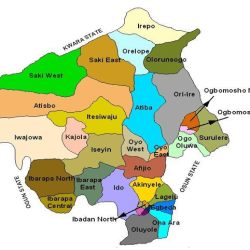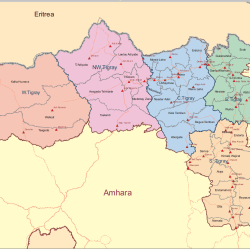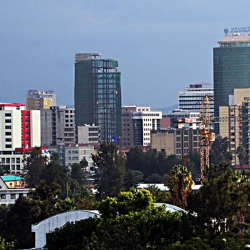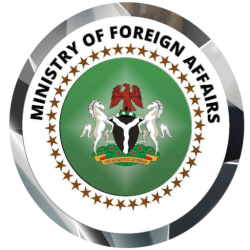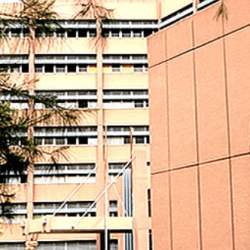Population of OROMIA Region, Ethiopia, according to Zone and Wereda
| OROMIA Region | 40,884,000 |
| • West Wellega-Zone | 2,030,772 |
| Menesibu | 189,822 |
| Nejo | 204,670 |
| Gimbi | 106,075 |
| Lalo Asabi | 115,314 |
| Kiltu Kara | 77,613 |
| Boji Dirmeji | 66,397 |
| Guliso | 105,262 |
| Jarso | 71,780 |
| Kondala | 139,169 |
| Boji Chekorsa | 70,590 |
| Babo Gambel | 88,824 |
| Yubdo | 57,002 |
| Genji | 87,545 |
| Haru | 99,306 |
| Nole Kaba | 88,911 |
| Begi | 176,166 |
| Gimbi | 67,536 |
| Seyo Nole | 109,817 |
| Homa | 36,790 |
| Ayira | 72,184 |
| • East Wellega-Zone | 1,847,649 |
| Limu | 106,192 |
| Ibantu | 53,680 |
| Gida Kiremu | 246,044 |
| Haro Limu | 74,143 |
| Boneya Bushe | 70,130 |
| Wayu Tuka | 89,812 |
| Gudeya Bila | 82,243 |
| Gobu Seyo | 61,904 |
| Sibu Sire | 153,085 |
| Diga | 101,138 |
| Sasiga | 116,808 |
| Leka Dulecha | 105,508 |
| Guto Gida | 127,779 |
| Jima Arjo | 129,682 |
| Nunu Kumba | 95,752 |
| Wama Hagelo | 69,790 |
| Nekemte | 163,962 |
| • Illu Aba Bora-Zone | 1,901,833 |
| Darimu | 209,422 |
| Alge Sachi | 114,477 |
| Chora | 148,717 |
| Dega | 58,392 |
| Dabo Hana | 61,849 |
| Gechi | 104,305 |
| Borecha | 106,828 |
| Dedesa | 124,998 |
| Yayu | 80,852 |
| Metu Zuria | 88,060 |
| Ale | 98,213 |
| Bure | 76,423 |
| Nono Sele | 33,876 |
| Bicho | 36,638 |
| Bilo Nopha | 42,472 |
| Hurumu | 64,073 |
| Didu | 47,275 |
| Mako | 31,274 |
| Huka /Halu | 25,273 |
| Metu | 62,752 |
| Bedele | 42,549 |
| Bedele Zuria | 110,424 |
| Chewaka | 80,521 |
| Doreni | 52,171 |
| • Jimma-Zone | 3,638,103 |
| Limu Seka | 273,214 |
| Limu Kosa | 240,569 |
| Sokoru | 203,410 |
| Tiro Afeta | 190,995 |
| Kersa | 239,190 |
| Mana | 211,796 |
| Gomma | 312,444 |
| Gera | 163,352 |
| Seka Chekorsa | 301,108 |
| Dedo | 414,377 |
| Omonada | 362,012 |
| Sigamo | 135,398 |
| Setema | 150,314 |
| Shebe Senbo | 163,276 |
| Chora Botor | 131,177 |
| Guma | 89,977 |
| Agaro | 55,495 |
| • West Shewa-Zone | 3,110,000 |
| Ginde Beret | 157,037 |
| Jeldu | 299,067 |
| Ambo Zuria | 154,744 |
| Midakegn | 114,696 |
| Cheliya | 240,349 |
| Bako Tibe | 192,210 |
| Dano | 142,824 |
| Nono | 122,423 |
| Tikur Enchini | 104,820 |
| Dendi | 254,866 |
| Ejere | 131,198 |
| Wolmera | 121,690 |
| Ada Berga | 183,599 |
| Meta Robi | 202,944 |
| Ambo | 105,000 |
| Abuna Gindeberet | 157,390 |
| Toke Kutayu | 182,678 |
| Jibat | 105,391 |
| Elfata | 83,011 |
| Holeta Town | 54,063 |
| • North Shewa-Zone | 2,145,813 |
| Were Jarso | 209,011 |
| Dera | 263,628 |
| Hidabu Abote | 122,824 |
| Kuyu | 187,146 |
| Degem | 145,532 |
| Girar Jarso | 95,664 |
| Debere Libanos | 71,000 |
| Wuchale | 143,497 |
| Abichuna Gnaa | 109,555 |
| Kimbibit | 114,536 |
| Bereh | 114,850 |
| Sululta | 194,854 |
| Fiche | 59,979 |
| Yaya Gulele | 80,135 |
| Jida | 76,267 |
| Mulo | 51,688 |
| Aleltu | 78,843 |
| Sendafa | 26,803 |
| • East Shewa-Zone | 2,185,839 |
| Fentale | 131,720 |
| Boset | 222,075 |
| Adama | 240,779 |
| Lome | 195,830 |
| Gimbichu | 128,307 |
| Ada A | 185,199 |
| Dugda | 233,430 |
| Adami Tulu Jido Kombolcha | 216,850 |
| Bishoftu | 217,964 |
| Bora | 92,139 |
| Liben | 110,725 |
| Akaki | 115,681 |
| Ziway | 95,140 |
| • Arsi-Zone | 3,980,967 |
| Merti | 139,587 |
| Aseko | 122,573 |
| Gololcha-Wewreda | 247,334 |
| Jeju | 181,434 |
| Dodota | 105,929 |
| Ziway Dugda | 175,208 |
| Hitosa | 190,588 |
| Sude | 212,171 |
| Chole | 132,029 |
| Amigna | 108,981 |
| Seru | 70,531 |
| Robe | 250,495 |
| Tena | 98,844 |
| Shirka | 242,330 |
| Digluna Tijo | 210,353 |
| Tiyo | 128,275 |
| Munesa | 248,232 |
| Limuna Bilbilo | 274,563 |
| Guna | 112,753 |
| Sire | 111,477 |
| Lude Hitosa | 163,892 |
| Deksis | 108,732 |
| Bale Gasegar | 109,606 |
| Enkelo Wabe | 88,400 |
| Asela | 146,655 |
| • West Hararge – Zone | 2,782,045 |
| Mieso | 205,027 |
| Doba | 192,835 |
| Tulo | 219,908 |
| Mesela | 219,085 |
| Chiro | 73,351 |
| Anchar | 120,955 |
| Guba Koricha | 176,045 |
| Habro | 289,783 |
| Daro Lebu | 294,311 |
| Boke | 219,906 |
| Kuni | 224,953 |
| Gemches | 264,781 |
| Chiro Zuria | 241,481 |
| Bedesa | 39,630 |
| • East Hararge-Zone | 4,035,797 |
| Kombolcha | 208,654 |
| Jarso | 168,756 |
| Gursum | 225,071 |
| Babile | 146,633 |
| Fedis | 164,229 |
| Haro Maya | 423,131 |
| Kurfa Chele | 87,801 |
| Kersa | 251,418 |
| Meta | 370,069 |
| Goro Gutu | 212,186 |
| Deder | 360,980 |
| Melka Belo | 259,223 |
| Bedeno | 346,555 |
| Midga Tola | 111,524 |
| Chinaksan | 133,026 |
| Girawa | 345,812 |
| Gola Oda | 152,640 |
| Meyu | 68,092 |
| • Bale-Zone | 2,119,829 |
| Agarfa | 154,913 |
| Gololcha | 147,684 |
| Gasera | 114,807 |
| Legehida | 90,394 |
| Ginir | 213,575 |
| Sinana | 168,531 |
| Goba | 57,928 |
| Harena Buluk | 119,539 |
| Dolo Mena | 135,529 |
| Meda Welabu | 140,893 |
| Berbere | 133,105 |
| Guradamole | 42,127 |
| Goro | 124,585 |
| Rayitu | 49,570 |
| Seweyna | 96,453 |
| Robe | 96,749 |
| Goba | 69,860 |
| Dawe Kachen – Wereda | 44,362 |
| Dinsho | 57,864 |
| Dawe Serer | 61,363 |
| • Borena-Zone | 1,431,922 |
| Bule Hora | 402,646 |
| Yabelo | 158,466 |
| Arero | 70,680 |
| Moyale | 44,286 |
| Dire | 108,979 |
| Teletele | 103,890 |
| Abaya | 150,358 |
| Dugida Dawa | 213,604 |
| Miyu | 74,918 |
| Gelana | 104,093 |
| • South West Shewa-Zone | 1,678,788 |
| Ameya | 178,227 |
| Wonchi | 134,518 |
| Woliso | 205,777 |
| Dawo | 122,731 |
| Ilu | 93,779 |
| Sebeta Hawas | 193,603 |
| Kersa Ena Malima | 120,094 |
| Tole | 91,588 |
| Becho | 116,185 |
| Seden Sodo | 100,613 |
| Woliso | 82,586 |
| Goro | 67,470 |
| Sodo Dacha | 64,049 |
| Sebeta | 107,568 |
| Guji-Zone | 2,073,775 |
| Uraga | 256,294 |
| Bore | 306,513 |
| Adola | 156,387 |
| Wadera | 75,437 |
| Odo Shakiso | 318,770 |
| Kercha | 330,661 |
| Liben | 198,348 |
| Dima | 81,966 |
| Hambela Wamena | 150,487 |
| Girja | 72,062 |
| Negele | 76,852 |
| Adola | 50,000 |
| • Adama Special- Zone | 480,175 |
| Adama | 480,175 |
| • Jima Special – Zone | 263,709 |
| Jima | 263,709 |
| • West Arsi-Zone | 2,998,140 |
| Siraro | 210,961 |
| Shala | 218,748 |
| Arsi Negele | 408,870 |
| Kofele | 266,056 |
| Kore | 151,534 |
| Gedeb Asasa | 281,357 |
| Dodola | 301,403 |
| Kokosa | 207,929 |
| Nensebo | 167,437 |
| Adaba | 206,357 |
| Shashemene | 218,997 |
| Shashemene Zuria | 358,494 |
| • Kelem Welega-Zone | 1,191,582 |
| Hawa Gelan | 140,617 |
| Yemalogi Welel | 74,264 |
| Dale Wabera | 159,070 |
| Gawo Kebe | 94,260 |
| Seyo | 165,777 |
| Denbi Dollo | 64,185 |
| Anfilo | 115,609 |
| Dale Sadi | 108,819 |
| Gidami | 126,344 |
| Jimma Horo | 67,381 |
| Lalo Kile | 75,257 |
| • Horo Gudru Welega-Zone | 859,339 |
| Horo | 109,374 |
| Shambu | 32,681 |
| Guduru | 144,345 |
| Hababo Guduru | 66,213 |
| Abey Chomen | 75,823 |
| Jima Genete | 96,482 |
| Jima Rare | 85,557 |
| Jardega Jarte | 73,175 |
| Amuru | 78,525 |
| Abe Dongoro | 97,159 |
| • Burayu – Zone | 127,921 |
| Burayu | 127,921 |
• Population figures based on year 2023 projections by the federal government census agency, Ethiopian Statistical Service.
Reference: statsethiopia.gov.et/population-projection/
Ethiopia
The Federal Democratic Republic of Ethiopia is an African country.
It shares borders with Eritrea to the north, Djibouti to the northeast, Somalia to the east and southeast, Kenya to the south, South Sudan to the west, and Sudan to the northwest.
Addis Ababa is the capital and largest city.

Languages: Amharic, Oromo, Somali, Tigrigna, Afar …
Currency: Ethiopian Birr
Dialing code: +251
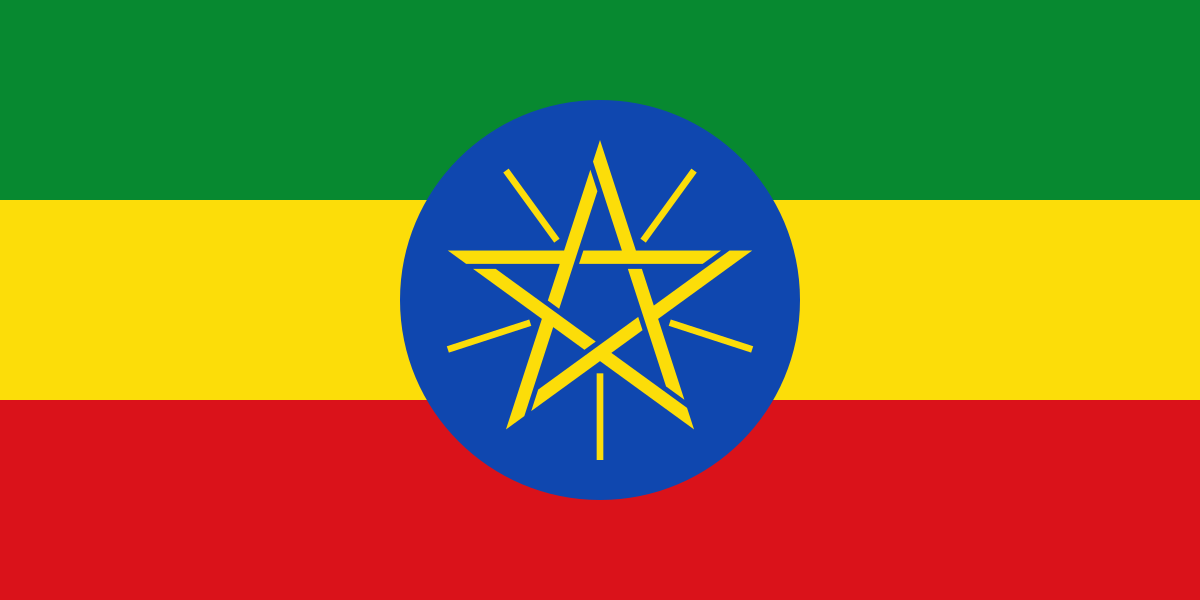
As of 2023 the country’s population was 107,334,000, making it the 13 most populated country in the world and 2 most populated in Africa after Nigeria.
It covers a land area of 1,112,000 square kilometres (472,000 sq. miles).

Ethiopia is multi-ethnic with over 80 different ethnic groups. Oromo and Amhara are the country’s two largest ethnic groups.
Christianity is the most widely professed faith in the country. The country has some adherents of Islam and other faiths.
Regions
Ethiopia is administratively divided into four levels: regions, zones, woredas (districts) and kebele (wards).
The first level administrative division in Ethiopia is a region, also called kilil, or alternatively regional state.
The 1995 Constitution of Ethiopia established the regions based on ethno-linguistic territories.
The country comprises 11 regions and two city administrations under these regions, many zones, woredas and neighbourhood administration: kebeles.
Previously, this level was called a province, and though many of the old province and new region names are the same, the entities are not identical and the words region and province are not interchangeable. As of 2022 there were eleven regions.
The regions and their capitals in Ethiopia are as follows:
- Addis Ababa (City) …. Addis Ababa
- Afar Region … Semera
- Amhara Region … Bahir Dar
- Benishangul-Gumuz Region … Asosa
- Dire Dawa (City) … Dire Dawa
- Gambela Region … Gambela
- Harari Region … Harar
- Oromia Region … Addis Ababa
- Sidama Region … Hawassa
- Somali Region … Jijiga
- South West Ethiopia Peoples’ Region … Bonga
- Southern Nations, Nationalities, and Peoples’ Region … Hawassa
- Tigray Region … Mek’ele
Zones
Regions are subdivided into zones. The number of zones varies, but most regions have around six to twelve zones.
The largest region Oromia has over 20 zones, and the two smallest regions have none.
There are some cities which are set up as “special zones”, such as Bahir Dar Special Zone in the Amhara Region.
The earlier equivalent to a zone was called an awrajja, and many zones today are named the same as their earlier awrajja, but the terms zone and awrajja are not interchangeable.
Woredas
Zones are divided into woredas (districts). In Ethiopia, the woredas comprise three main organs: a council, an executive and a judicial.
The Woreda Council is the highest government organ of the district, which is made up of directly elected representatives from each kebele in the woredas.
The representative of the people in each kebele is accountable to their electorate.
Kebele
Woredas are divided into kebele, municipalities. Each kebele comprises around 20 smaller villages.
Kebele is the smallest administrative division. This is sometimes also called tabia or tabiya. They are at the neighbourhood level and are the primary contact for most citizens living in Ethiopia. Their administrative unit consists of an elected council, a cabinet (executive committee), a social court and the development and security staff. Kebeles are accountable to their woreda councils and are typically responsible for providing basic education, primary health care, agriculture, water, and rural roads.
